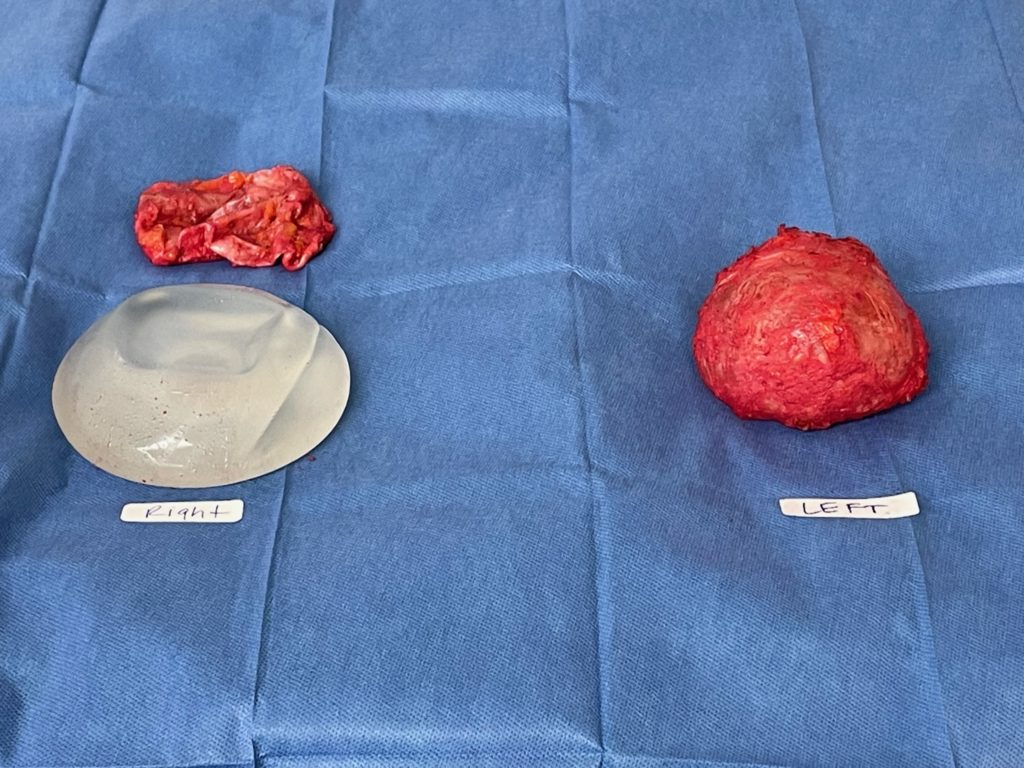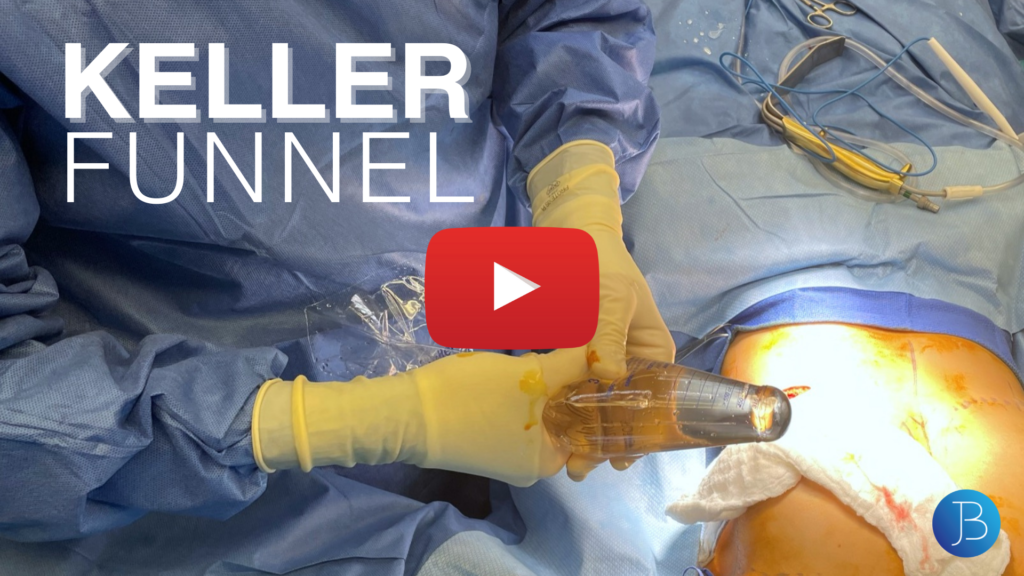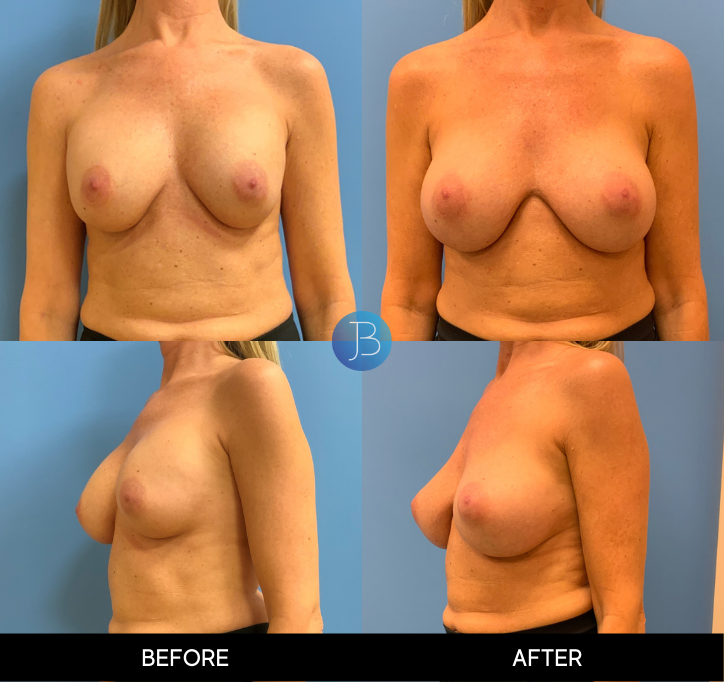What is capsular contracture?
Capsular contracture is the most common complication following implant based breast surgery and is one of the most common reasons for reoperation. The formation of a “capsule” of scar tissue around any kind of implant (medical or cosmetic) is a normal part of the healing process. The body automatically reacts to any foreign object it detects within it and attempts to isolate said object by creating a barrier of scar tissue around it.
In the case of breast implants, this is usually a good thing – the capsule helps to keep the breast implants in place, preventing slippage. In some patients, however, this capsule of scar tissue becomes unusually hard and starts to contract around the implant. This can lead to both aesthetic problems and, in extreme cases, pain in the breasts.
The severity is rated using a grading system. There are four grades, starting with grade one. Grades one through three relate to how the implant looks and how it feels, from an examination perspective. While grade four is when someone has painful capsular contracture, which automatically puts it into category four.
- Grade 1: Grade one capsular contracture is asymptomatic (producing or showing no symptoms). The formation of scar tissue around the implant does not interfere with the size, shape or texture of the breasts. The breasts look natural and remain soft to the touch.
- Grade 2: Grade two capsular contracture usually presents itself with only minor cosmetic symptoms. The breasts will usually appear normal in shape but feel somewhat firm to the touch.
- Grade 3: Grade three capsular contracture presents itself with obvious cosmetic symptoms. The breasts will be firm to the touch and appear abnormal, e.g., they will be overly round, hard-looking and the nipples may be misshapen. However, this grade of capsular contraction often doesn’t cause much (if any) pain.
- Grade 4: Like grade three capsular contracture, grade four capsular contracture causes the breasts to become hard and misshapen. Patients with grade four capsular contracture also experience breast soreness; their breasts will often be tender and painful to the touch.
Signs and symptoms
Signs of capsular contracture, such as increasing firmness or tightness in the breast, can start to appear as early as a few months after your implant reconstruction surgery or years later.
You may want to consider corrective surgery for capsular contracture if it’s causing you chronic pain, restricted range of motion, and/or changes in the position and shape of the breast.
What causes capsular contracture?
We’ve learned over time that capsules can start to contract. Sometimes it’s patient factors that are uncontrollable. But the variables we can control are one, decreasing the amount of bacterial that can get in and around the implant at the time of placing it. And number two, blood or blood products around an implant at the time of placing the implant.
It’s important to note that capsular contracture is not usually dangerous to the patient’s health unless her implants have ruptured (in the case of gel implants, rupture can sometimes lead to infection).

How to prevent capsular contracture?
This is where Dr. Bloom’s surgical technique helps to decrease the longterm risk of capsular contracture. During surgery he makes sure that the dissection is as bloodless as possible, and if there is any bleeding during the surgery, he takes extensive measures to make sure it’s not bleeding. This includes multiple rinses with saline, checking every surface, making sure that there is no potential for blood to end up in the implant pocket post operatively.
Bleeding into the implant pocket has other complications that could require more surgery, but long term his goal is to make sure this is the cleanest place to put an implant from a bleeding perspective. Once that is complete and everything is undertaken from a bleeding perspective, and hemostasis has been achieved within the pocket, he irrigates with an antibiotic mix. Depending on patient allergies, it contains 2-3 antibiotics and the final rise also includes betadine. These triple antibiotic washes have shown to clear the inside pocket of any possible contamination that the implant could sit in which would then, as the scar tissue forms, could cause some of the capsular contracture to happen.
In addition, the implant is bathed in the solution while Dr. Bloom is preparing to put the implant in the pocket. The final step is using something called no touch technique – this means the implant is made sterile in a factory and gets placed into the patients body without a single person touching it. This means no gloves – no even sterile gloves – touch the implant. We do this using the Keller funnel. (See video below.) It looks like a frosting pipette bag, but it is specially designed and sterilized for surgery. And what this does is the implant is inserted in to the sleeve without any contact from human hands, and then it’s placed into the pocket, and with gentle pressure it slides into the pocket. The implant is then confirmed quickly to make sure it is appropriately oriented and sitting in the pocket correctly. Then the pocket is immediately closed in three layers to seal the implant off from the outside world. Following this the patient not only gets antibiotics before surgery and they are sent home with oral antibiotics all with the idea that this will prevent long term capsular contracture.

How to fix capsular contracture?
If patients start to develop capsular contracture, there is a medicine called Singulair, which is actually an allergy medication, that is prescribed to patients for about 90 days to help prevent further generation of capsular contracture. And in the cases where surgery is required (like the example pictured above) where we need to replace the current implant with another implant, we will start medication preemptively to try to prevent any additional cases of capsular contracture, if it was patient driven factors that caused it.
For patients that have had breast augmentation surgery there are screening tools and timeframes recommended by the implant company to check for implant rupture, but the presence of capsular contracture is one thing that doesn’t get checked for with MRIs, ultrasounds, or even mammograms. It is something that’s going to be seen visually and/or on exam, plus or minus pain. So for patients that have had breast augmentation in the past who start to notice the change in the shape or size of their implant, and/or pain, it may be a sign of capsular contracture.
Sometimes people will have had their implants for 10-15 years and the surgeon who originally placed the implant is no longer practicing. This where Dr. Bloom can work with the patient to evaluate the situation and come up with a plan. Sometimes surgery is necessary. In some cases the entire capsule and implant are removed in one piece, in others the it’s removed piecemeal. Lastly, a new implant is placed in the same pocket or moved to a new pocket to help prevent further capsular contracture from forming.

Dr. Bloom is here to help
If you are concerned with any signs or symptoms of capsular contracture, schedule a consultation at Dr. Jacob Bloom’s Chicago or Burr Ridge office.
